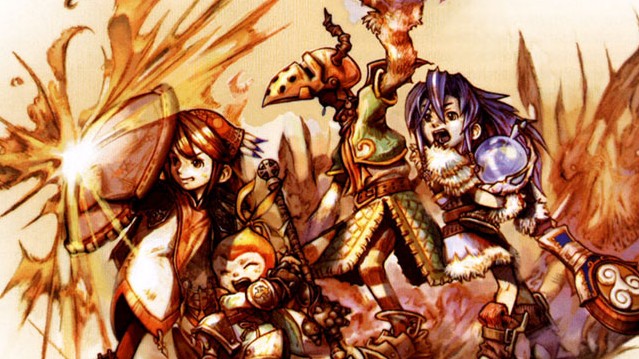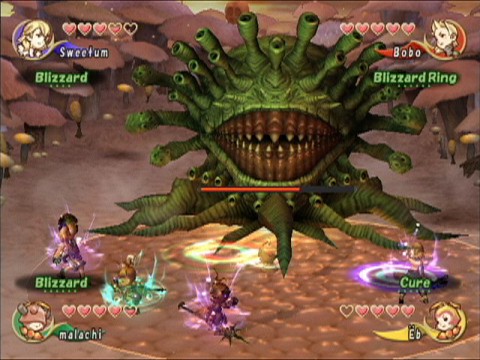
The relationship between Square Enix and Nintendo has been a long and bumpy one. While the excellent Final Fantasy series took pride of place on the manufacturer’s consoles up until SNES, the decision to use cartridges instead of optical discs for Nintendo 64 caused a rift between the companies which saw not only a move by Squaresoft (as it was then called) towards Sony and the PlayStation, but also a dearth of RPGs on Nintendo’s last cartridge-based system.
The almost total absence of turn-based gameplay (Nintendo 64 had just nine RPGs in its catalogue, three of which were Japan-only) might sound like a blessing to some, but it caused serious harm among fans of the genre and allowed Sony, with its optical discs allowing such features as voice acting and pre-rendered cinematics, to dominate the market, especially with Final Fantasy VII, VIII, and IX.
While Nintendo handhelds played host to numerous RPGs, the next home console, GameCube, needed a kick start. But when newly-merged Square Enix deigned to release a Final Fantasy game for the system, what players got was neither what they expected or thought they wanted. Instead of a port of a main-series Final Fantasy game, they received an odd action-RPG with an emphasis on co-operative multiplayer.

Final Fantasy: Crystal Chronicles tells the story of a world consumed by miasma, a harmful fog which is only repelled from towns by protective crystals. Playing as one of four unique races with different attributes, the player must journey across the world to replenish their town’s crystal once per year.
While it is possible to play the game alone, with the crystal chalice which protects from miasma in levels carried along by a helpful Moogle, bosses are difficult and spells cannot be stacked and thus have their power boosted. It’s therefore at best an annoyance to play through solo and at worst impossible.
There was a long-standing joke about Final Fantasy: Crystal Chronicles. It centred on the cost of all the equipment needed to play co-op, and might have been a major reason the series never took off. Aside from three friends, the full experience couldn’t be enjoyed without four Game Boy Advance systems and four GBA-GameCube link cables. While Game Boy Advance was successful enough for it to be assumed that most people owned one, finding four people willing to play the game together was more of a challenge.
Nonetheless, get it set up properly and the game is brilliant fun. There’s a tremendous satisfaction to stacking up a big spell and unleashing it on a boss to maximum effect, even if one player is busy carrying the crystal chalice or hunting for treasure. The lack of RPG features– there is for instance no leveling up or HP and magic is acquired through collectibles rather than learned– do not distract from the fun but rather enhance it, allowing for faster-paced gameplay than otherwise and imbuing the game with a tinge of party-suitability. While gathering the requisite players is hard, the right crowd given the right motivation can have a great time.
The Game Boy Advance connectivity was a unique feature that couldn’t have been done on any other system. Each player, equipped with a personal screen, could examine their items and equipment while keeping the main screen free from clutter. It didn’t offer new abilities in the same way that The Legend of Zelda: The Wind Waker’s Tingle Tuner did, but it did represent Nintendo’s attachment to off-TV play and local multiplayer which continues to this day. In much the same way, the Tingle Tuner showed off the ideas of asymmetric gameplay to which Wii U also subscribes. It can be quite fascinating to delve into the past and see where current philosophy had its genesis.
Ultimately, the game sold poorly and was not the saving grace that GameCube needed in order to perform well in its generation. But it stands as a testament to Nintendo’s remarkable commitment to local, co-operative multiplayer at a time when competitive and online multiplayer was beginning to come to the fore. Those with a GameCube and a bunch of GBAs still hanging around should certainly consider giving it a go.




 ShareThis
ShareThis






